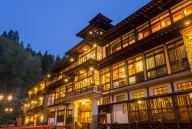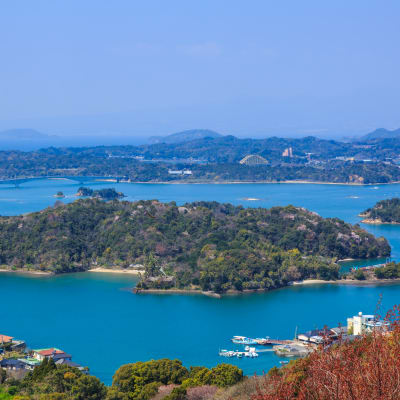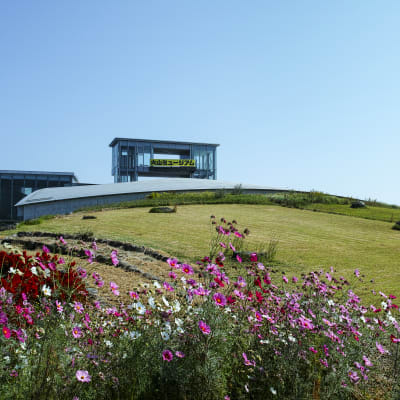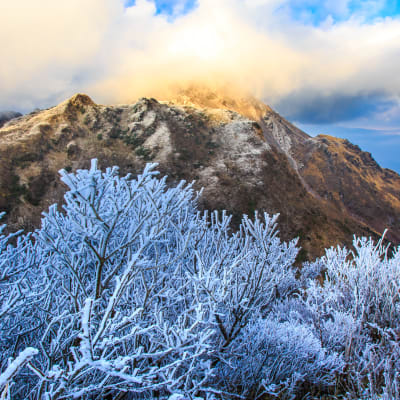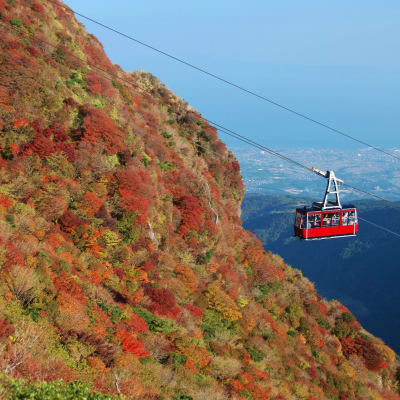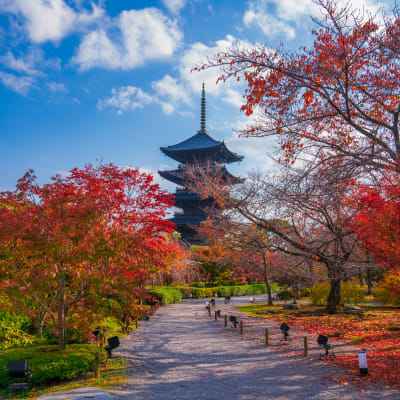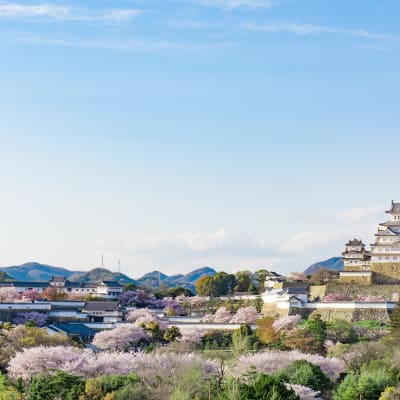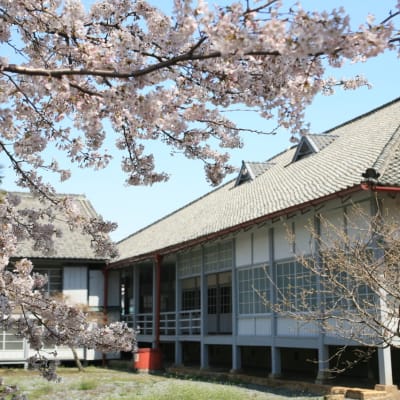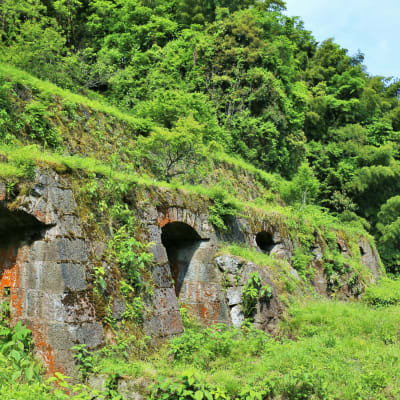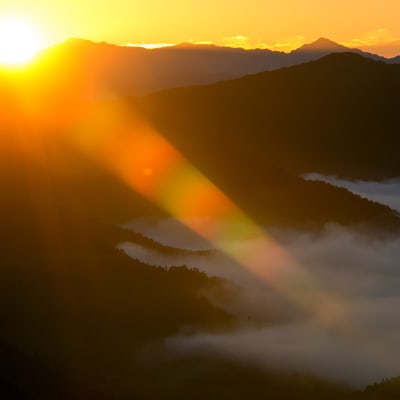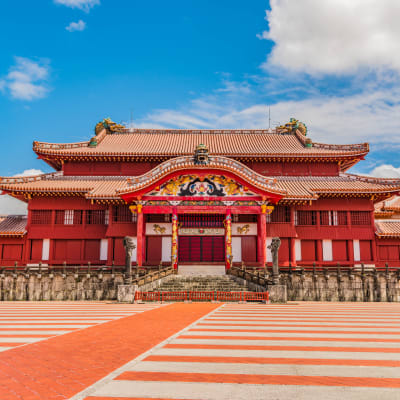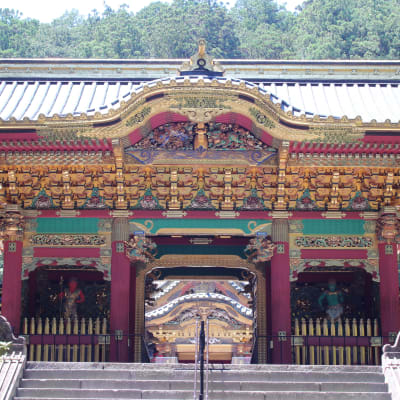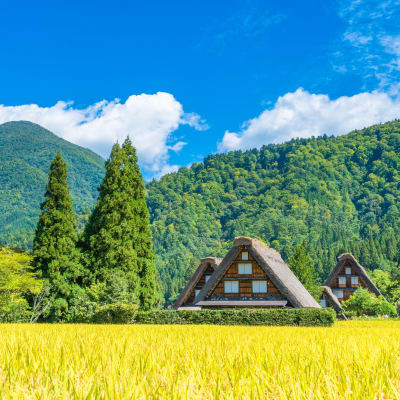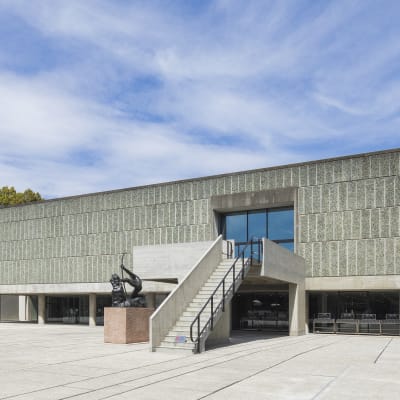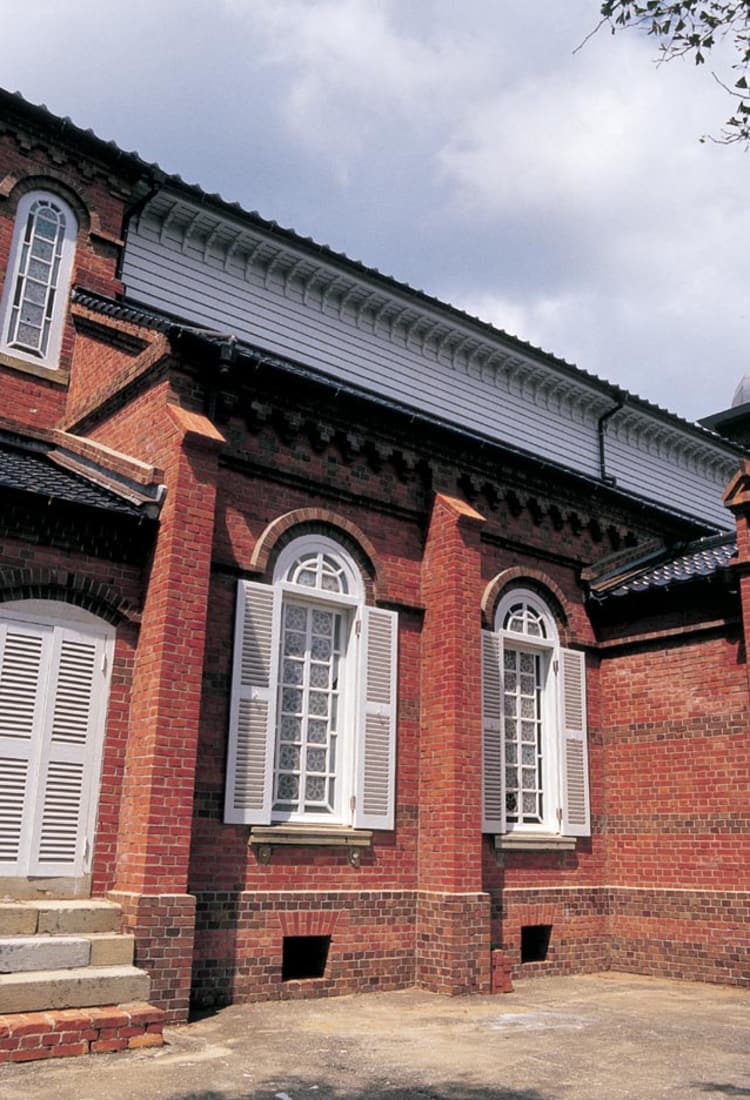

Verborgene christliche Stätten in der Region Nagasaki (UNESCO) Eine Reise durch 400 Jahre Industriegeschichte
Nach dem Verbot des Christentums durch das Tokugawa Shogunat Anfang der 1600er Jahre zogen sich die wenigen Christen Japans in den Untergrund zurück
Das Christentum kam zum ersten Mal Mitte der 1500er Jahre nach Japan, wo es sich kurzzeitig rund um Nagasaki und Amakusa-Region verbreitete. Wer dieses Gebiet heute besucht, findet dort Burgruinen, wieder erbaute Kirchen und religiöse Artefakte. Außerdem kann man erfahren, aus welchen Gründen die Menschen gezwungen wurden, ihren Glauben anzunehmen, wie diese Glaubensmuster fortbestehen, welche Rituale ihnen als Zeichen des Abfalls vom christlichen Glauben aufgezwungen wurden und die Geschichte der Religionsfreiheit, die im späten 19. Jahrhundert wieder hergestellt wurde.

kattyan / PIXTA


Tourismusverband der Präfektur Nagasaki
Höhepunkte
- Besichtigung der Burgruine Hara, wo in den 1600er Jahren ein lokaler Aufstand von mehrheitlich christlichen Bauern ausbrach, der der Auslöser dafür war, dass sich die Christen versteckten
- Trekkingtour auf den Berg Unzen mit seinem rauen vulkanischen Terrain, gefolgt von wohltuenden natürlichen Thermalquellen
- Besuch der gut erhaltenen archäologischen Anlagen und Siedlungen der Inseln Amakusa und Hirado

Zweieinhalb Jahrhunderte religiöser Verfolgung
Das Christentum breitete sich im 16. Jahrhundert durch den jesuitischen Missionar François Xavier d'Entrecolles für einen kurzen Zeitraum in Nagasaki und der Amakusa-Region aus. Nur ein paar Jahrzehnte später, 1614, verbot das Edo-Shogunat den Glauben und Christen wurden vor die Wahl gestellt, entweder zum Buddhismus zu konvertieren, ihren Glauben heimlich auszuüben oder durch Folter ermordet zu werden.
Obwohl viele Christen gezwungen wurden, ihren Glauben zu leugnen, fanden viele andere einen Weg, ihren Glauben im Geheimen zu leben. Da es keine allgemeinen Geistlichen oder Institutionen mehr für die Anhänger gab, entwickelte sich die Religion langsam in eine ganz eigene Form.

Kathedrale von Oura
Mit der Öffnung von Japan nach der Meiji-Restauration (1868–1912) und der offiziellen Aufhebung des Verbots des Christentums 1873 konnten die Christen, die ihre Religion so viele Jahre im Verborgenen ausübten, dies nun öffentlich tun. Viele in der Region erbaute Kirchen stammen aus dieser Zeit Mitte des 19. Jahrhunderts. Besonders bemerkenswert ist die Kathedrale von Oura im Herzen von Nagasaki , eine katholische Kirche im gotischen Stil, die für die in der Siedlung lebenden Europäer gebaut wurde. Kurz nach ihrer Erbauung im Jahr 1865 bekannte sich eine Gruppe von Christen, die sich versteckt hielten, gegenüber der Priester der Oura Kathedrale zu ihrem Glauben, was zu einem Wendepunkt führte, der als "Entdeckung der Gläubigen" bekannt ist.
Eine blutige Revolte und der Beginn einer langen Periode der Abschottung
Um sich aus erster Hand ein Bild der Christenverfolgung zu machen, besuchen Sie die Stadt Minami-Shimabara im Süden von Nagasaki . Mehr als 20 000 Bauern lehnten sich hier gegen das Shogunat auf und kämpften gegen religiöse Unterdrückung und Steuererhöhungen. Die Revolte führte schließlich zu einer offenen Konfrontation mit rund 120 000 Soldaten, die 1638 in der Schlacht an Burg Hara gipfelte. Das Blutvergießen zwang die Christen dazu, sich zu verstecken und einen eigenen Weg zu finden, weiterhin ihren Glauben zu praktizieren.

Wenn Sie Minami-Shimabara heute besuchen, finden Sie dort Steinfundamente, Burgtore und ein Steinmonument, das an den Aufstand erinnert. Von dort auf haben Sie einen Blick über das Meer, perfekt für Fotoaufnahmen.
Wenn Sie mehr Zeit in der Region verbringen, sollten Sie einen Ausflug zum nahegelegenen Berg Unzen unternehmen, einem aktiven Vulkan, der aufgrund geothermischer Aktivität brodelt. Früher wurden Christen zur Bestrafung hierher geschickt. Heute finden Sie hier traditionelle Gasthäuser, Thermalbadeorte und weitere landschaftlich reizvolle Sehenswürdigkeiten.

Der Berg Unzen
Heimat des einzigartigen Glaubenssystems der Region
Von Minami-Shimabara aus können Sie mit einer Fähre die Amakusa-Region umrunden, eine Reihe felsiger Inseln mit üppiger Vegetation und idyllischen Küstenorten. Die Amakusa-Region war die Hochburg von Amakusa Shiro, dem Anführer des Shimabara-Aufstands. Die im Untergrund lebenden Christen beteten in geheimen Räumen und schufen unauffällige Statuen der Jungfrau Maria, die der typischen buddhistischen Kannon ähnelten.
Auf der Hauptinsel Shimoshima finden Sie mehrere katholische Kirchen, die Anfang des 20. Jahrhunderts erbaut wurden, sowie das Christliche Museum von Amakusa.
Mit dem Auto können Sie die Inseln der Umgebung wie Ueshima und Oyano erkunden, wo sich auch Museen befinden (das Santa Maria Museum und das Amakusa Shiro Museum), in denen die Geschichte der versteckten Christen der Region erzählt wird.
Siedlungen nordwestlich von Nagasaki
Im Nordwesten von Nagasaki liegt die Stadt Sotome. Wie auch in Amakusa übten Christen hier ihren Glauben bis Mitte der 1800er Jahre im Verborgenen aus. Nach der Meiji-Restauration wurden einige Kirchen in die Gegend wieder aufgebaut. Unter ihnen die Shitsu- und Ono-Kirche, die bis heute genutzt werden und deren ursprüngliches Aussehen bewahrt wurde.
Eine Insel, die einst von Jesuiten, Niederländern und Briten bewohnt war
Unternehmen Sie als Nächstes einen Ausflug zur nordwestlichen Insel Hirado , die eine reizvolle Landschaft, christliche Kirchen, eine Burg aus dem 17. Jahrhundert und vieles mehr zu bieten hat. Im Ikitsuki Island Museum Shima no Yakata können Sie Buntglasfenster und andere Relikte aus der christlichen Vergangenheit der Region bestaunen. Neben der bemerkenswerten religiösen Geschichte war Hirado jahrzehntelang auch offen für niederländische und britische Händler, bevor diese 1641 gezwungen wurden, auf die Insel Dejima umzusiedeln. Das heutige Denkmal für William Anders und die Hollandbrücke zeugen von dieser interkulturellen Vergangenheit.

Insel Hirado
Anfahrt
Nagasaki und die Amakusa-Region liegen auf der westlichen Seite von Kyushu und können vom Bahnhof Hakata in Fukuoka mit dem JR Limited Express Kamome erreicht werden. Um nach Amakusa zu kommen, müssen Sie entweder eine Fähre von einem der Häfen in Nagasaki nehmen oder von Fukuoka bzw. Kumamoto fliegen. Da die Sehenswürdigkeiten weit auseinanderliegen und öffentliche Verkehrsmittel nur selten verkehren, ist es am bequemsten, die Gegend mit einem Mietwagen zu erkunden.































